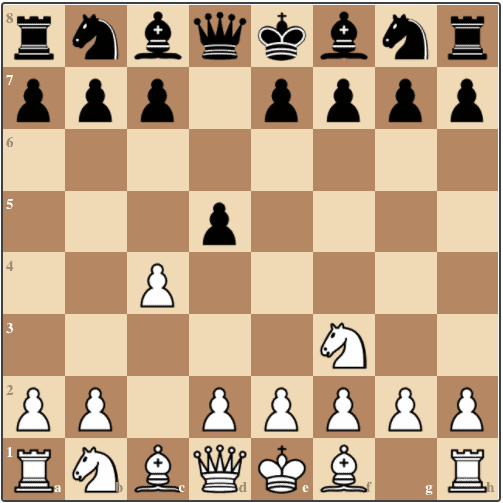Teach Yourself Better Chess...Part Three
Teach Yourself Better Chess...Part Three
In 1997, International Master Bill Hartston published a book called Teach Yourself Better Chess. Its goal was to delve a little more deeply into the principles of good chess. He explained the ideas behind the elementary rules of chess and introduced the reader to what makes up good judgment and intuition in chess. Here are some of Hartston’s principles and advice.
------------------------------------------------------------------------------------------------
Most decisions you make in a chess game are not crucial. Such decisions such as exchanging or not or blocking or not may lead to small advantages and disadvantages. But once in awhile, it really matters what you play. The ability to recognize a crisis and spot a critical moment only comes with experience. This is most common when a player who has had the initiative for some time begins to lose it. Strong players stop to think when a crisis arrives; weak players think when they don’t know what to do. That is why a long think by a strong player is usually followed by a very precise move, while a long think by a weak player is followed by an error.
The first thing to sort out when it is your turn to move is the immediate tactics. Has your opponent overlooked something and left himself open. When you have looked at all the possible tactics, you then look at general strategy. A good policy is to look at all your pieces and ask yourself what useful functions each is performing. Then improve the effectiveness of your weakest piece. Finding a useful function for one piece can lead to a better understanding of what the other pieces and pawns should be doing as well. When you have run out of ideas and don’t know what to do, try moving a piece that you haven’t moved for a long time.
Perhaps the most consistent of all errors by weaker players is to overestimate the value of the initiative. The art of good defense is patience. Everyone likes to attack, but it is just as easy to win games by good defense as by attacking well. You may have a slightly passive or cramped position, but as long as it contains no structural weaknesses, your position should be defensible. When the attacking forces eventually have to retreat, the attacker may have created his own weaknesses because he overextended himself. The greatest vulnerability is after an initial attack that has been beaten back. The defender will then breathe a sigh of relief and make a fatal mistake instantly. The attacker may continue playing aggressively and leave himself open to a decisive counterattack. Keeping calm under pressure is the essence of a good defensive play.
A common error happens when a player becomes so fixated on one move or variation that it produces an inhibiting effect on all other thoughts. You start thinking about a tempting rook move down a file, overlooking a more powerful move sideways of the same rook. You think so long about moving a knight forward trying to attack that you never consider a powerful retreat of the rook. You see that you can put a piece powerfully established on a strong square but miss the chance to force a simple win with a simple exchange. Sometimes good ideas interfere with better ideas. The only solution is to train yourself to look again at each move of a variation in a fresh manner. You need to put your previous thoughts aside and clear a path in your mind to let radically new ideas to come through.
Choose what openings to play by looking at grandmaster games and picking those systems in which you find it natural to identify with the moves of one side. When you have found a opening you like, look through chess magazines, newspaper columns, book, on the Internet, YouTube, chess databases, chess engines, etc for as many complete games in that opening as you can find. Then play them all quickly. Ideally, you want to look at about 100 games with the opening you wish to study. Some of the games will have unnatural moves, such as a knight on the rim, or castling queenside instead of the expected kingside, etc. But, after a dozen or so games, you will find that similar maneuvers crop up again and again. Just learning variations will never enable you to develop a proper feel for a particular opening. Try to avoid the more complex and fashionable systems unless you have lots of time and can keep up with the latest theoretical developments.
More half-points are thrown away by the inability to recognize a technically won endgame than through any other single cause. A great part of good endgame play lies in recognizing when “better position” turns into ‘winning position’ and when ‘difficult position’ turns to ‘lost game.’ You have to build up your endgame knowledge through experience. You need to work out for yourself many king and pawn endgames, most opposite-colored bishop endgames, and lots of rook and pawn endings.
-------------------------------------------------------------------------------------------------
Bill Wall
Source
http://www.chessmaniac.com/teach-yourself-better-chess/


No comments:
Post a Comment